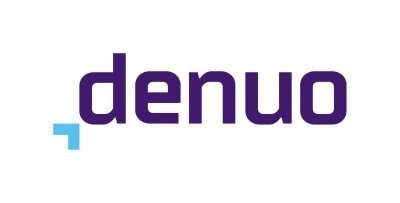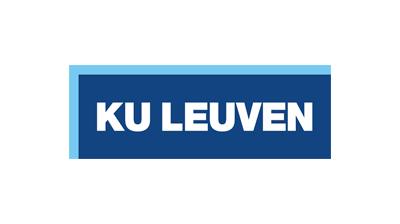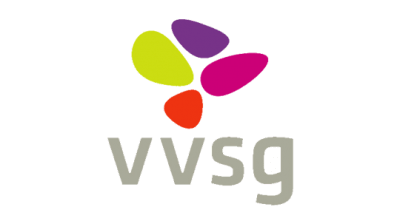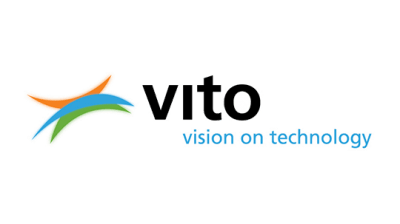What is Circular Procurement?
Circular procurement aims to retain the value of the products, components and materials to be purchased as much as possible.
This video from Zero Waste Scotland explains exactly what circular procurement is and what benefits it has to offer.

What is the advantage of circular procurement?
Circular procurement is an important tool for promoting a circular economy. Circular choices in the procurement process stimulate the market for circular products and services. The spending volume of an organisation can therefore be exploited to generate a positive impact for people and the environment.
Circular procurement can also provide economic benefits. A total cost of ownership analysis (TCO) for the various scenarios gives a total overview of the cost over the entire useful life of a product or service, such as the energy consumption, maintenance costs or residual value at the end of life. This often leads to different decisions being taken than when only purchase prices are compared.
Transition to a circulair procurement organisation
Circular procurement is not solely the responsibility of the procurer. It involves more than just the technical specifications at the time of purchase. The way a product is used and disposed of also contributes to circularity. Everyone within an organization involved in the procurement process can take steps towards circularity: purchasers, internal customers, contract managers, and management. Suppliers can also contribute to circular solutions when the right questions are posed to the market. By creating space for circularity, the entire procurement chain can be mobilized, initiating the transition to a circular procurement organization.
If management is convinced of the benefits of circular procurement, it can be integrated into the organization's vision and strategy. This approach encourages all employees to commit to circular procurement.
A circular procurement pilot is an excellent way to learn and demonstrate the possibilities and positive impact to others in your organization. Our database offers numerous examples of successful procurement projects and circular providers to inspire you.
To complete the transition, procurement processes and systems must be thoroughly evaluated. The role of procurers will become more strategic, with greater emphasis on market dialogue and the monitoring and evaluation of contracts.
Douwe Jan Joustra, head of Circular Transformation of the C&A Foundation, made some clear statements during his presentation on the action day on 11 June 2019:
- Create new conditions for change. All too often, we’re still investing in optimising existing systems. The transition to a circular economy requires experimentation, innovation, and acceleration.
- From 'Waiting for Demand' to 'Mechanism Design'. Consumers aren’t always the driving force behind the change of a product or an economy. Customers often respond to what’s being developed, so it’s important that the roots of change are in the market itself. Start offering circular solutions now!
- Performance-based contracting. Purchasers still want too much responsibility for the content and elaboration of the contract. In the contract documents, ask for performance at a specific price. Ask the right questions, and let the market determine the details of the contract documents.
- Rising demand for services. Customers are increasingly demanding services instead of products. This is reflected, among other things, in the increasing demand for service models such as LAAS, PAAS and FAAS.
- Social responsibility in the chain. In addition to circular principles, it’s also important to take social aspects into account, such as child labour, fair wages and good working conditions.
"Nothing you do is wrong, accept doing nothing."
- Jordie van Berkel, founder of F-Fort and author of 'Inkoop in Strategisch Perspectief’ (Procurement in Strategic Perspective)
Publications about Circular Procurement
This study focuses on the introduction of mandatory sustainability requirements in four EU member states, namely France, Spain, Italy, and the Netherlands, with particular attention to the impact (be…
The European Commission has launched an online tool for procurement entities, providing reliable information on international procurement rules. Users enter the procuring entity, subject matter, and …
The main goal of this research report is to define clear model clauses for PaaS contracts, which reflect the expectations and intentions of the parties involved. The clauses cover all aspects of a co…
Circular procurement is a key driver of sustainability, underscoring the potential of organisations to influence the shift towards a more resource-efficient and resilient future. Johan Rodenhuis, a s…
Constructing a circular building is a complex process involving a range of aspects. We caught up with An Eijkelenburg and Emiel Ascione to talk about their experiences on two different circular build…
According to the European Environmental Bureau, 10 million tonnes of furniture are discarded by businesses and consumers in the European Union each year, the majority of which ends up in the landfill…
The advantages of having a circular business model are numerous. That’s certainly been the case for Anders Mølgaard, owner and founder of the Danish SME BurntWood. His company collects recycled wood …
Circular principles are well embedded in the Municipality of Kolding. But that wasn’t always the case. In fact, not that long ago the municipal organisation was doing little more than exploring some …
One of the ways we can accelerate the transition to a circular economy is to change our procurement practices. Programmes like ProCirc are running pilot projects to test the waters. Joan Prummel and …
The aim of the Circular Supplier Success guide is to help suppliers, specifically SMEs, navigate the complex landscape of procurement and tenders, including those labelled green, sustainable, respons…
In this whitepaper, we share our experiences with anyone who is establishing a Community of Practice for circular procurement. This document guides you through our learning trajectory methodology and…
The ProCirc Icebreaker Tool is an innovative icebreaker tool designed to facilitate discussions and decision-making around circular procurement. It provides a structured framework to assess the poten…
The circular business model route maps aim to provide a clear path for businesses to follow, enabling them to understand and implement circular economy practices effectively. By embracing these pract…
Measurements on savings in CO2 emissions, waste generated, and the amount of virgin materials consumed can all be used to demonstrate the concrete impact that circular procurements contribute to. Mea…
Circular economy can significantly contribute to the net zero emission goals required to halt the climate crisis, but it requires a paradigm shift. The more than 30 circular procurement pilots of Pro…
The Procurement Toolbox is based on existing tools and methodologies aimed at supporting procurement services. When choosing a tool, it is important to consider the context of your organization, the …
Interreg NSR ProCirc partners created a workshop guide for procurement teams with the goal of creating an action plan to guide the team toward the behavioral change needed to achieve circular transfo…
GREENER is a European Erasmus+ project that aims to support companies participation in Green Public Procurement. From December 2020 to November 2022, partners developed several tools to facilitate co…
This document is created as a manual for the Procurement Transformation Workshop. This workshop can be set up by organisations who want to rethink their procurement processes and integrate circularit…
This guidance is written for procurers and affiliated functions. It offers a general introduction to the topic of circular procurement. It guides you to the many resources that are available, and hel…
Public procurement is responsible for a significant proportion of global greenhouse gas (GHG) emissions. Governments can accelerate their path to net-zero operations by adopting the green procurement…
The second publication from the Interreg NSR project ProCirc discusses leasing as a replacement for the traditional ownership model. It contains interviews with users and a supplier.
The Nordic Circular Economy Playbook can be leveraged by companies that want to better meet customer expectations and deliver customer outcomes. It is for you that wants to enable outcome-oriented so…
This circular economy procurement framework was created by the Ellen MacArthur Foundation to help companies kickstart circular economy initiatives within their procurement process.
This online course is a product of the Urban Agenda partnership for Public Procurement. A specific module about circular procurement is available.
The URBACT Knowledge Hub brings together good practices from across the EU, with the latest urban trends, to fill the gaps and make sure that the learning is within everyone's reach. At URBACT we see…
Best Practice Report published by ICLEI
Best Practice Report on Market Engagement published by ICLEI
What is the status of public procurement in Europe? How is Public Procurement of Innovation (PPI) addressed by public authorities? When does PPI come to play with public procurers' needs?
the European Parliament commissionedthe Environment Agency Austria (EAA) tostudy current usesand opportunities of GPP as a driver for a more Circular Economyin the EU, with respect to the Commission’…
This document aims to introduce the role that sustainable procurement can play to accelerate the transition to a circular economy and the shift towards more sustainable patterns of consumption and pr…
EN The GPP Training Toolkit is designed for use by public purchasers and by GPP trainers, or integration in general public procurement training courses and workshops. This module is deals with how to…
The GPP Training Toolkit is designed for use by public purchasers and by GPP trainers, or integration in general public procurement training courses and workshops. This module is about why market eng…
Determine your circular ambitions by setting goals and strategies to achieve them.
The report seeks to consolidate the information currently available on product-service systems (PSS) and to offer clarity on the drivers, advantages and challenges associated with their provision by …
Good practice and guidance document on Green Public Procurement.
ICLEI – Local Governments for Sustainability - published this report on Best Practice in Circular Procurement
The study was carried out in Nordic co-operation by Finnish Environment Institute, IVL Swedish Environmental Research Institute and Copenhagen Resource Institute


















